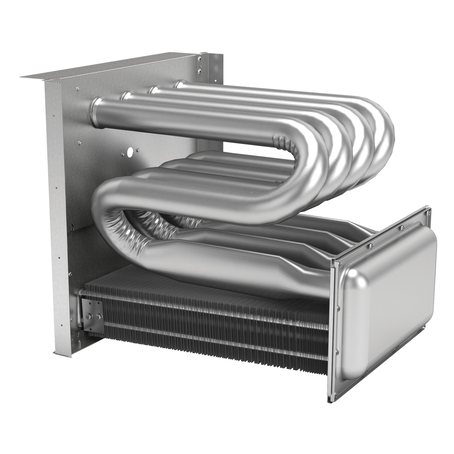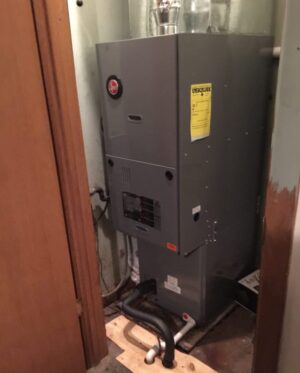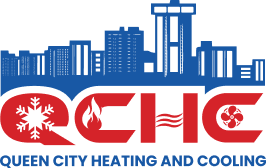If your home has central heating and either a gas or oil furnace, one of the most important parts of the entire system is your furnace’s heat exchanger. The heat exchanger is what allows these furnaces to safely transfer the heat that they produce to the air that flows through your ductwork. Today we’re going to provide a full overview of what a furnace heat exchanger is, how it works and why it is so important to have your heat exchanger inspected every year.
How a Heat Exchanger Works
A heat exchanger is essentially a series of metal tubes that sit on top of the furnace’s combustion chamber and run between it and the exhaust flue or chimney. The combustion chamber is where the unit’s gas or oil burners are located. When the unit is running, it burns oil or gas to produce extremely hot combustion fumes. These fumes then travel up through the heat exchanger on their way to the exhaust flue.
As the fumes flow through the heat exchanger, the metal tubes absorb most of the heat energy from the fumes before they exit through the flue. The HVAC blower works to bring cool air in through the building’s return air vents, and this air is then forced over the metal heat exchanger. As the air is much colder than the heat exchanger, the heat energy is then released into the air and almost instantly raises the air temperature.
Primary vs. Secondary Heat Exchangers
Conventional furnaces only have a single primary heat exchanger. This is why conventional furnaces are less energy efficient as the metal heat exchanger can only ever absorb so much heat at a time, which means that energy is wasted as some latent heat will always remain in the combustion fumes when they flow out of the heat exchanger.
High-efficiency condensing furnaces are different as they have a secondary heat exchanger that is connected to the primary exchanger. This secondary heat exchanger works to ensure that much more of the latent heat is absorbed from the combustion fumes before they exit the furnace and are vented outside through the exhaust flue. This process absorbs so much of the heat from the fumes that they get cold enough for any moisture within them to condense, which is why high-efficiency furnaces also have a condensate drain system that collects this water and transports it away from the furnace.
Why a Cracked Heat Exchanger Is Such a Serious Issue

If your heat exchanger is cracked, your furnace won’t produce nearly as much heat as the hot fumes will escape before the heat exchanger can fully absorb the heat they contain. That being said, the far bigger issue is that a cracked heat exchanger can lead to your furnace leaking carbon monoxide into your ductwork and then circulate throughout the building.
Burning natural gas doesn’t produce any carbon monoxide as long as the gas fully combusts. If your heat exchanger is cracked, it can allow too much air to get inside the combustion chamber. Too much air can prevent the gas from combusting fully and thus lead to the furnace producing carbon monoxide.
Unfortunately, there is no easy way for you to tell on your own if your heat exchanger is still in good shape or has started to crack as much of it is hidden away where it can’t easily be seen. The fact that a cracked heat exchanger creates a risk of potentially fatal carbon monoxide poisoning means that you should always hire a furnace technician to fully inspect it every year just to be safe.
Springfield’s Heating and Cooling Professionals
If you need a furnace inspection or any other HVAC service in the Springfield area, you can trust the team at Queen City Heating & Cooling. We specialize in all types of furnace repair and air conditioner repair as well as preventative maintenance and installation, and we also offer indoor air quality and water heater services.
For information or to schedule a service call, contact us today!






